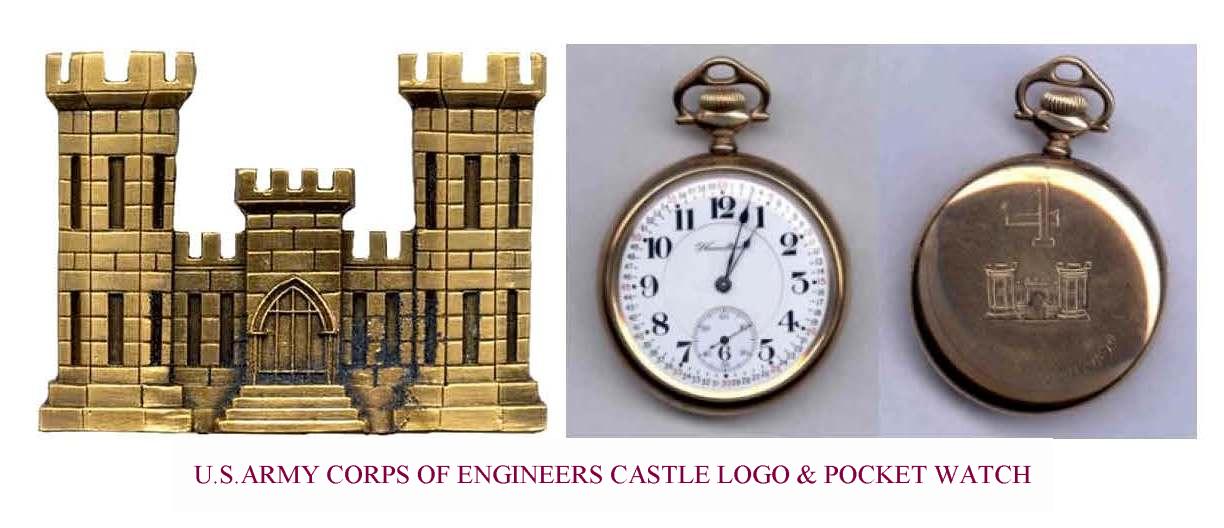The United States Army Corps of Engineers: Monumental Accomplishments
Sing the praises of the United States Army Corps of Engineers (USACE). For the monumental accomplishments; especially here and now in America during the COVID-19 Pandemic. A vivid example is the building of entire hospitals, termed Alternate Care Facilities, in places that had not been outfitted as hospitals such as the Javits Convention Center in Manhattan. The Javits Center project was completed in a matter of days and can now accommodate 1,900 patients. According to USACE COVID-19 Response Efforts Chart online, other projects adapt college dorms, hotels, arenas and convention centers to Alternate Care Facilities for a total bed count of 15,839 for COVID-19 and non-COVID patients. Once projects are approved, they are completed anywhere from 5 days to 2 weeks.
What is the origin of USACE? Well, we have George Washington to thank for his vision and forward thinking – he appointed Col. Richard Gridley the first chief engineer of the then Continental Army in 1775. Seven years later the engineers undertook the building of the West Point Military Academy on the west bank of the Hudson River in New York State.
It would not be until 1802 that the Corps of Engineers would become a permanent part of the U.S. Army. Their motto is essayons, a French phrase meaning, “Let us try.” According to their official public website (USACE.army.mil) their mission is “. . . to deliver vital public and military engineering services; partnering in peace and war to strengthen our nation’s security, energize the economy and reduce risks from disasters.” That statement succinctly clarifies the works undertaken by the corps, not only in the United States but throughout the world.
Wherever wars or disasters occur in the world, you will find the Army Corps of Engineers rebuilding infrastructure, clearing obstacles for military action and assisting humanity in any number of ways.
During World War I, some 240,000 American army engineers served in Europe in numerous capacities. They undertook projects such as building and repairing roadways, bridges, railways, storage facilities, hospitals and military housing.
The main mode of transportation during World War I was by train. Railroads provided a fast and relatively safe way to move troops and supplies. Accurate timekeeping was imperative for safe coordination of military movement on the rails. Therefore, the corps procured approximately 1,000 pocket watches from the Hamilton Company of Lancaster, PA. These time pieces were employed by the corps in their oversight of the railroad operations in France, as well as in other operations. The watches were inscribed with “4 World War 1917-1919” as well as the engineer castle logo.
Over the years, the ranks of the Army Corps of Engineers have boasted some famous people. Here are 3 examples:
Robert E. Lee was an officer in the corps for more than a quarter century prior to his Civil War service. He was a graduate of the West Point Military Academy in 1829. On the battlefield, Lee was said to excel at tactics. He later became a Civil War General in the Confederate Army.
There are many types of engineers within the corps including Combat Engineers. Melvin Kaminsky was such an engineer during World War II. He is better known as Mel Brooks. In 1944, when Mel was 18 years old, he fought in the Battle of the Bulge. He was reportedly skilled at clearing land mines. After being discharged from the Army, Corporal Kaminsky became a TV comedy writer.
Baseball legend Warren Spahn was also a Combat Engineer and served in the 276th Engineer Combat Battalion at Remagen, Germany during World War II. He was wounded by shrapnel and earned the Purple Heart for his actions when the Ludendorff Bridge over the Rhine River collapsed. Many engineers were killed and some were injured. Warren returned to his major league pitching career after his military service with a different outlook. He said, “. . . I was worrying about every pitch. But nowadays I just throw them up without the slightest mental pressure . . . Nobody’s going to shoot me.”
In June of 1944 Army engineers were on the front lines when the Allies landed on Omaha Beach and Utah Beach during the Normandy Invasion. The engineer’s role was to clear beach obstacles to enable the troops to move ashore, then to clear roads for the inland assault. They worked under heavy enemy fire. Largely due to the efforts of the engineers, the invasion was successful.
The next month the Army Corps of Engineers answered the call to rehabilitate the Italian Port of Leghorn that had been occupied, destroyed and sealed off by the Germans. The Allies needed the port restored in order that it be used as a supply base, ship dock and to enable troop advancement to the Po River. Their first task was clearing of numerous mines set by the Germans.
In recent history, USACE was among the first responders in 2005 when Hurricane Katrina blasted the south and in 2012 when Hurricane Sandy decimated the New York and New Jersey coastline. And when the World Trade towers fell on September 11, 2001 the USACE was called to restore power to the Wall Street financial district. They accomplished that within one week.
As of 2020, USACE reportedly employs some 37,000 civilians working with their 500+ soldiers. Civilians are employed in many types of jobs from teaching environmental responsibility to kids, to spelunking and rock climbing; from desk jobs, to working on outside projects like building hospitals.
So we Sing the Praises of the Army Corps of Engineers for their continued works, especially in the fight against the COVID-19 Pandemic. Their efforts are herculean and so important. For all.




